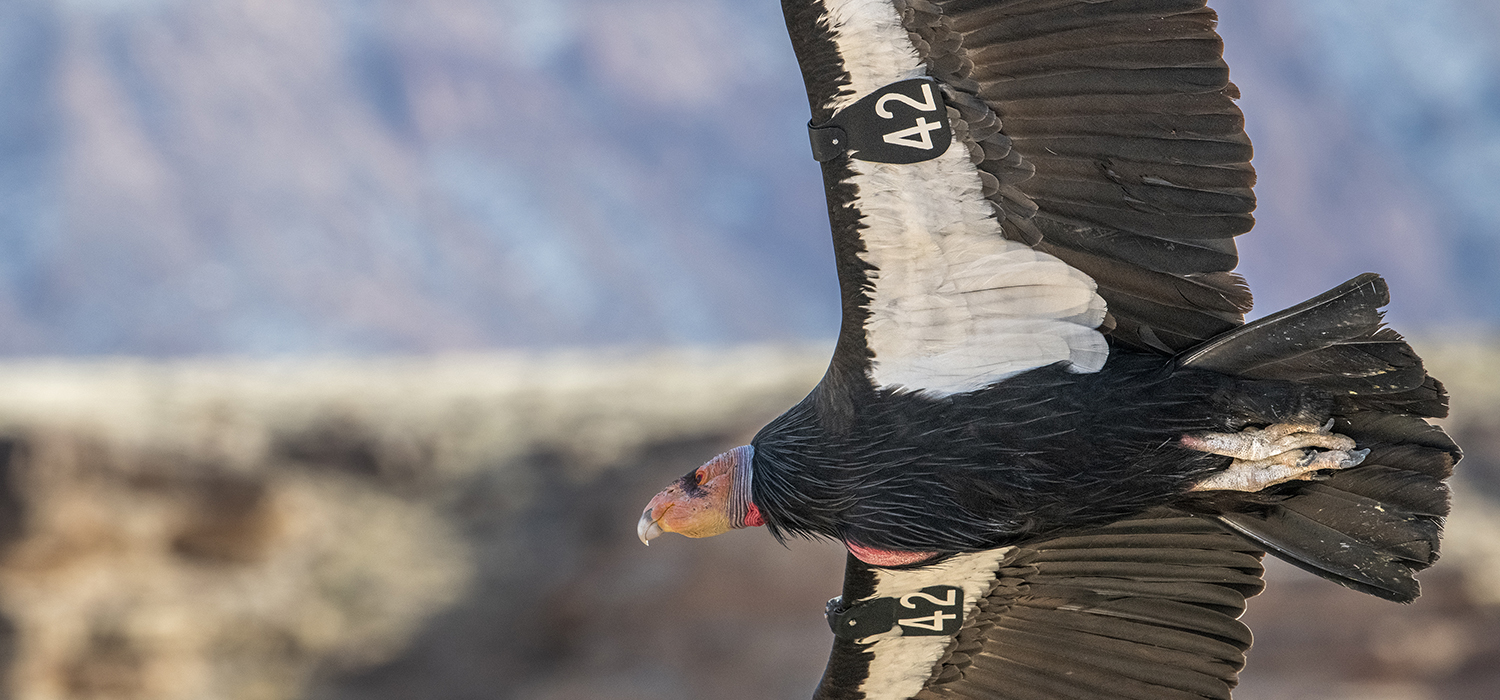This winter, not far from where President Biden had stood on August 8, 2023 to declare the new Baaj Nwaavjo I’tah Kukveni – Ancestral Footprints of the Grand Canyon National Monument, dark grey piles of uranium ore began accumulating on the ore pad at Pinyon Plain Mine (formerly Canyon Mine), inside the monument.
These piles of radioactive dirt marked the first time in its nearly 40-year occupation of public lands south of the Grand Canyon that the mine had commercially operated, owing to years of depressed uranium prices. The start of mining also marked a long-dreaded threshold for Native nations and their allies.
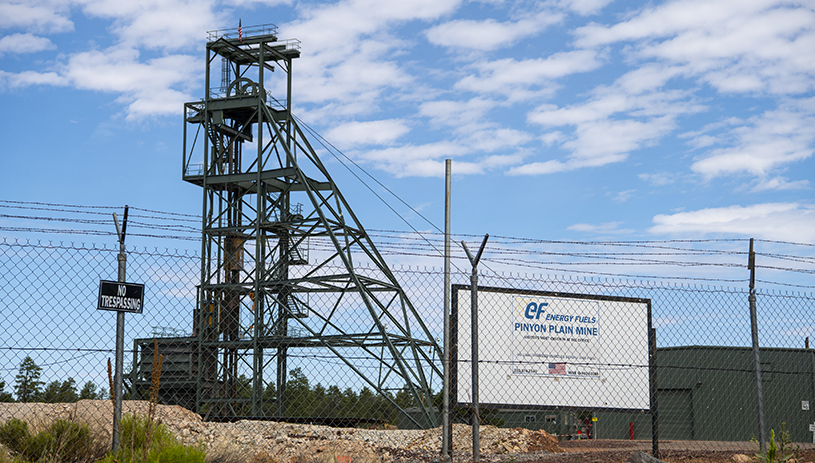
As of July 31, 2024, around 9 million pounds (4,500 tons) of uranium ore were stockpiled on the mine’s surface. The mine’s owner, Energy Fuels Resources, is allowed to stockpile up to 26.2 million pounds (13,100 tons) in above-ground piles and is supposed to sprinkle them with water to keep radioactive dust from blowing outside the chain-link fence. Nine million pounds was less than just a day earlier.
On July 30, 2024, Energy Fuels had sent the first two trucks hauling ore from the mine roughly 300 miles through numerous communities to the company’s White Mesa Mill.
The start of hauling was an unwelcome surprise to tribal and local leaders who had been promised two weeks’ advance notice by Energy Fuels, which they did not receive.
In response, Navajo Nation President Buu Nygren sent Navajo police to intercept the haul trucks, citing the Navajo Nation’s 2012 ban on uranium hauling and vowing to prevent further hauling across Navajo lands. Energy Fuels claims it can legally haul ore despite the Navajo Nation’s disapproval because the trucks are on state highways.

A few days later, Arizona Governor Katie Hobbs announced a temporary pause in hauling. Ultimately, this dispute may end up in the courts. If hauling does resume, Energy Fuels expects to send six to eight truckloads per day along the haul route to the mill. But so long as hauling is stopped, the mine’s operational days are numbered, limited by its onsite stockpiling cap.
Levels of some heavy metals in that water have been high over the years, but in the last quarter of 2023, around the same time as the mine began extracting uranium, levels of uranium, arsenic, and lead in water collecting in the mine shaft spiked. Uranium jumped 150%, arsenic jumped 4,700%, and lead increased 8,100% compared to the previous year.
These spikes are not a surprise, nor do they prove that the mine is polluting surrounding aquifers. What’s problematic is that this is a normal occurrence during mining operations, one that presents a particularly sticky engineering challenge in the complex, highly fractured layers of rock that make up the Grand Canyon region. For the conceivable future, polluted water must be kept from making its way from inside the mine into surrounding aquifers, including the deep Redwall-Muav Aquifer — the sole source of drinking water for the Havasupai Tribe.
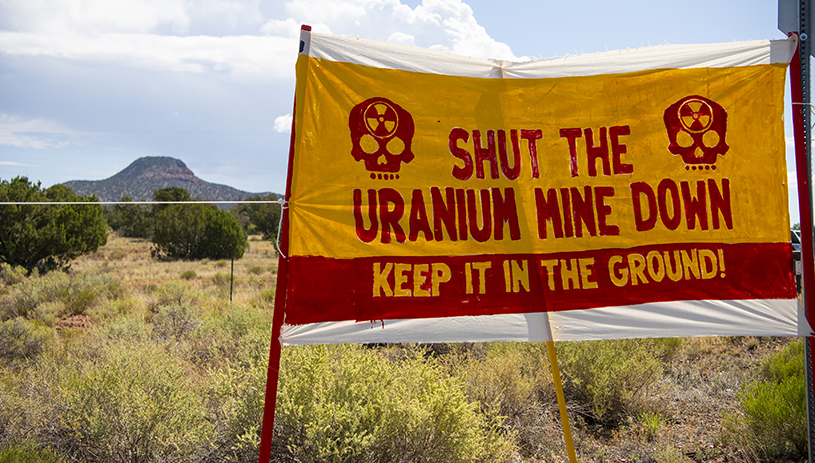
For now, Energy Fuels pumps the contaminated water out of the mine and into a lined evaporation pond. But the mine operator is not required to pump out groundwater flows indefinitely. In fact, pumping will cease when the mine closes.
The company plans to stop groundwater from flowing into the mine shaft after closure by filling it with clay, concrete, remnant mine infrastructure, and the dirt and rocks that were removed while digging the mine shaft. This is an unrealistic solution in the long run. Despite claims by mining companies and some state regulators that contaminated water from the mine shaft can’t reach drinking water aquifers, hydrologists who study the region say there’s too much we don’t understand about potential pathways for pollutants to travel.
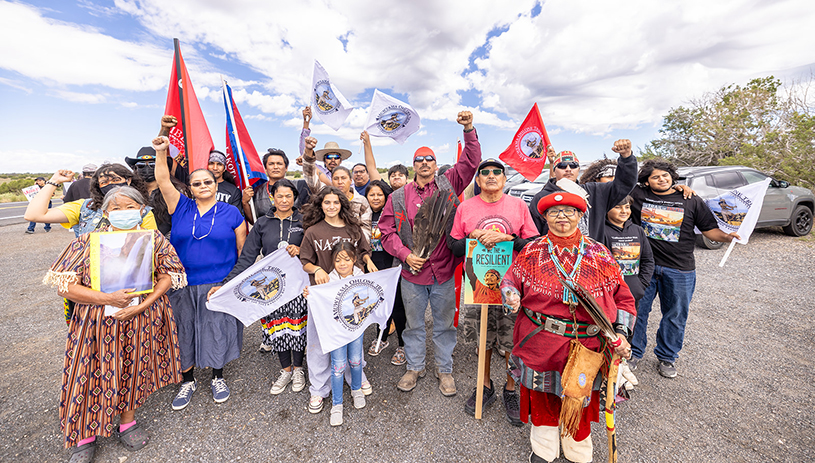
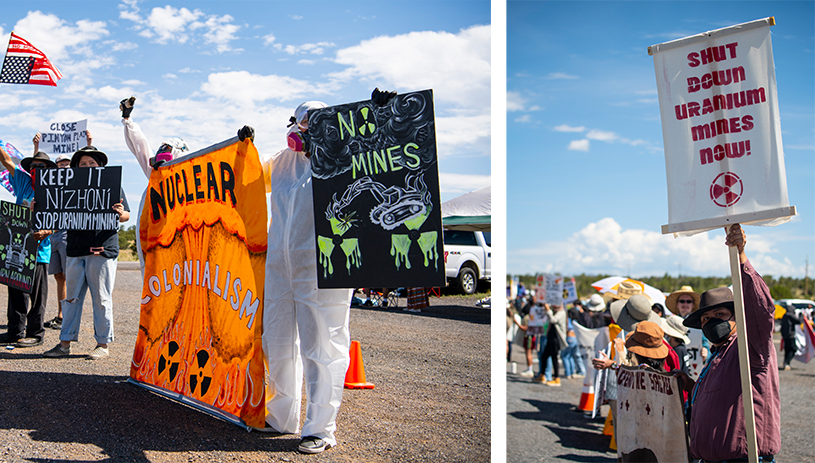
Protestors near the mine turnoff, along the road to Grand Canyon National Park. BLAKE MCCORD
In the long term, this mine poses an unnecessary risk to the Colorado Plateau and to the Grand Canyon region’s groundwater systems, which Western science is still trying to understand. By mining, the company is opening a Pandora’s box.
The Grand Canyon Trust supports calls by Native nations to close the mine. Unfortunately, at this point, there is no off switch that can make the risk go away, but whether closure comes sooner or later, with your support, the Trust will work with allies to ensure the mine is held to the highest possible standards.
 Amber Reimondo directs the Grand Canyon Trust’s Energy Program.
Amber Reimondo directs the Grand Canyon Trust’s Energy Program.
